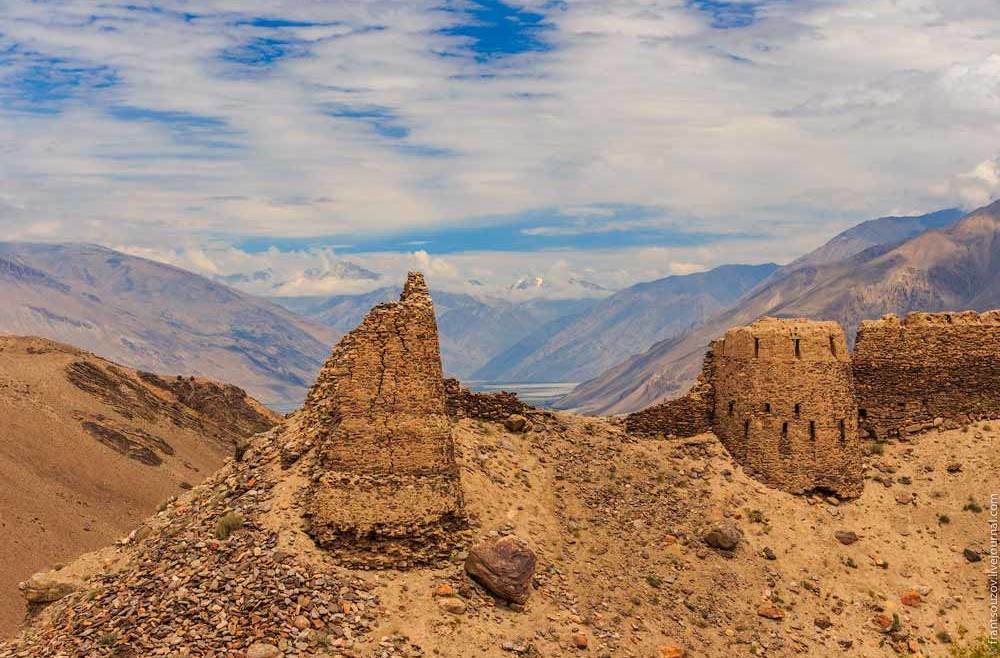Yamchun Fortress was built in the III century BC on the Bank of the Panj river in the Pamirs. When the layout is used the relief of the slope. The walls of the fortress height of about 3 m and a width of about 1.5 m have no Foundation and are made of stone. The fortress was very important in its importance for the local places and controlled the movement of people and goods from the Pamirs to ancient Bactria, Tokharistan and further to India, Iran and back.
The ruins of caravanserais, stupas, FORTS, towers and palaces scattered throughout the valley testify to the glorious past of this legendary tract.
Traders from near and far abroad have been plying the silk road for thousands of years. The tumultuous trade did not escape the Kushan Kingdom, which quickly realized that traders needed a safe passage to transport their goods, which the Kushans would be able to guarantee in exchange for a small fee. A large number of fortresses dual purpose were erected to protect traders from raids bandits and protect the Empire from neighboring peoples.
Yamchun Fortress is the best preserved of all these buildings. The Fort is certainly not in perfect shape, but given that it stands on top of a heavily eroded hill in an area prone to earthquakes and landslides, it is considered a miracle that it has survived to the present day.
Yamchun was built in 300 BC (or, according to some sources, in 100 BC). The fortress overlooks the Wakhan valley and parts of the Hindu Kush mountains in the northernmost Afghan territories. What part of the fortress survived to the present day is a controversial question, since the ancient citadel was rebuilt and expanded between the X and XII centuries.
The triangular shape of the fortress corresponds to the shape of the top of the hill. Two layers of fortified walls outline the perimeter of the citadel. Round towers with narrow openings are directed downwards towards the valley. Looking at the surviving towers, it becomes clear that they were built in stages, which is proved by the different colors of stones and cementing material.
It is assumed that the fortress Yamchun was Zoroastrian temple of eternal fire. This is not surprising, given that it was the predominant religion of the time, but historians have not yet come to a consensus about whether the ruins of the building in the fortress belong to a religious structure.
Not far from the fortress there is a hot radon spring, in which healing water flows directly from under the mountain.

